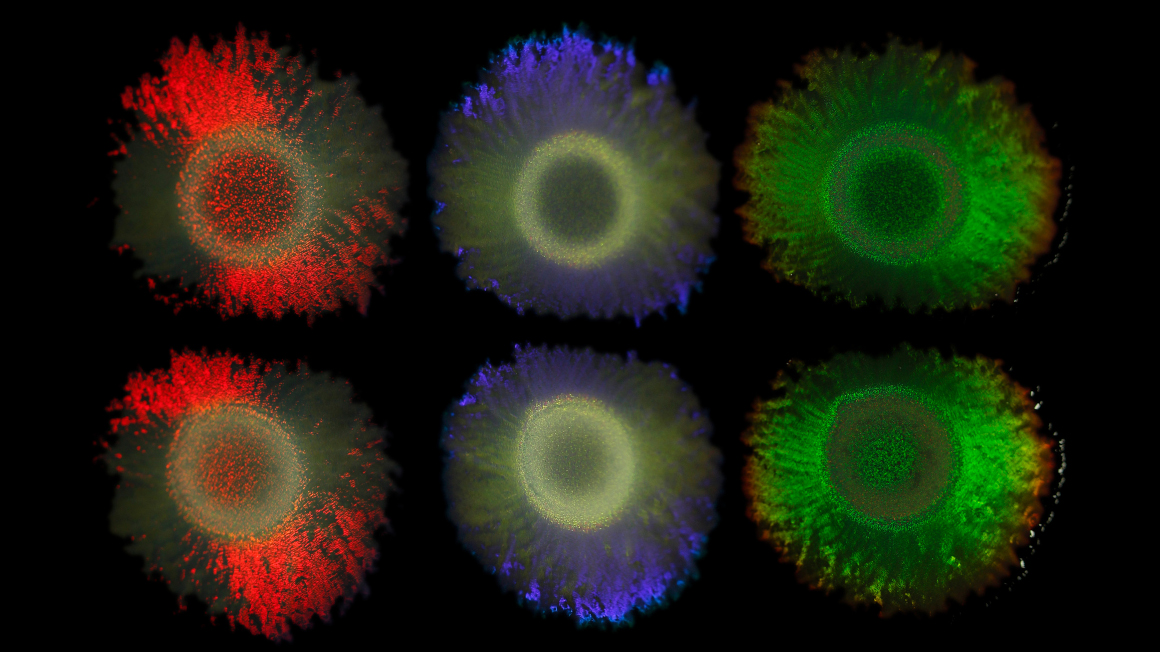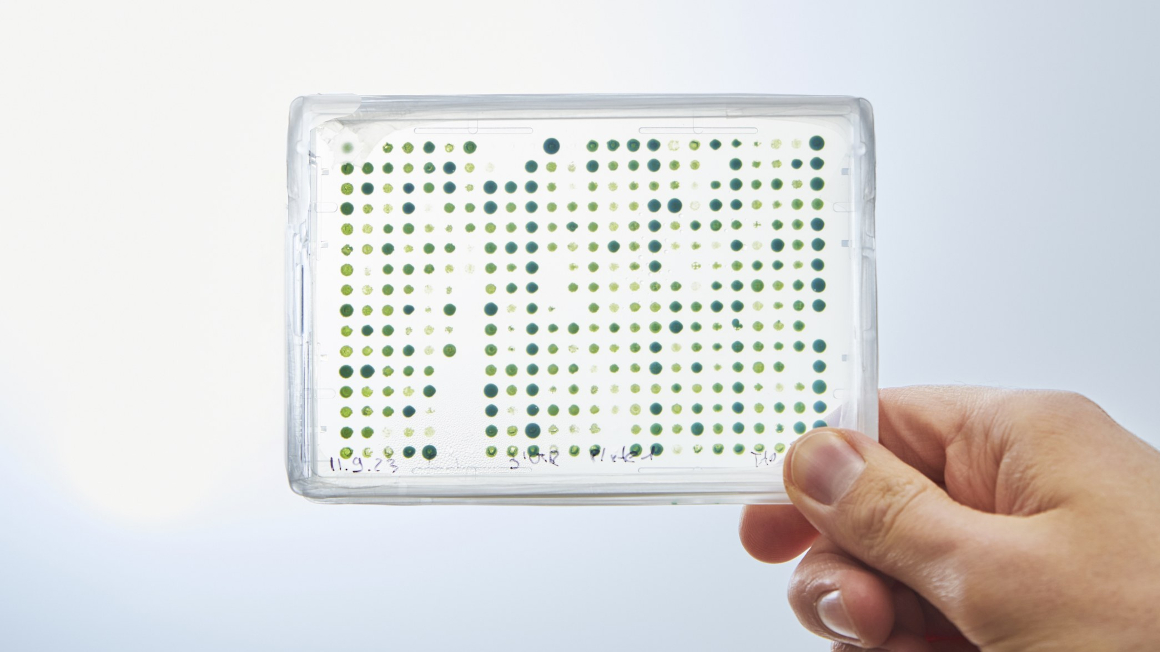Sustainable colours with iridescent bacteria
A research team from the Jena Cluster of Excellence ‘Balance of the Microverse’ has decoded the mechanism that enables some bacterial strains to reflect light and form colours in a similar way to butterfly wings.

Peacock feathers or butterfly wings, such as those of the peacock butterfly, fascinate with their splendid colours. However, it is not pigments that are responsible for this iridescent effect, but tiny structures that reflect the light in a special way. Some bacteria also have the talent to form similarly glittering and iridescent structures. Researchers from the Cluster of Excellence ‘Balance of the Microverse’ at the University of Jena have now taken a closer look at bacterial colonies with this talent.
Mechanism of bacterial light reflection investigated
The international research team investigated the mechanism that enables these bacterial species to reflect light without using pigments. Researchers from the Max Planck Institute of Colloids and Interfaces, the Leibniz Institute DSMZ-German Collection of Microorganisms and Cell Cultures, Utrecht University, Cambridge University and the Netherlands Institute for Sea Research were involved in the study.
As part of the study, the DNA of 87 coloured and 30 colourless bacterial strains was sequenced and genes responsible for these colonies were identified. As the team reports in the journal ‘Proceedings of the National Academy of Sciences’ (PNAS), artificial intelligence was used to develop a model that can predict which bacteria produce these colours based on the DNA.
Colour-reflecting bacterial strains live predominantly in water
‘We used this model to analyse over 250,000 bacterial genomes and 14,000 environmental samples from international open science repositories,’ says Bas Dutilh, Professor of Viral Ecology and Omics at the University of Jena and researcher in the Cluster of Excellence “Balance of the Microverse”. ‘We found that the genes responsible for structural colour are mainly found in oceans, freshwater and in specific habitats such as intertidal and deep-sea areas. In contrast, microbes in host-associated habitats, such as the human microbiome, have very little structural colour.’
To the researchers' surprise, these genes are also found in bacteria that live in deep oceans without sunlight. The marine bacterium Marinobacter alginolytica is one of the microbial strains living in the sea that reflect such iridescent colours. Just as the feathers of the peacock or the wings of butterflies have bright colours, the colours of the marine bacterium are also due to ordered structures that form a photonic crystal and cause interference effects, it is said.
Inspiration for environmentally friendly dyes and materials
According to the researchers, the results suggest that the colourfulness of the bacterial colonies not only serves to reflect light, but ‘the colours could reflect deeper processes of cell organisation with important functions, such as the protection of bacteria from viruses or the efficient colonisation of floating food particles’. These findings could be an inspiration to develop environmentally friendly dyes and materials based on these natural structures, the team writes.
bb


